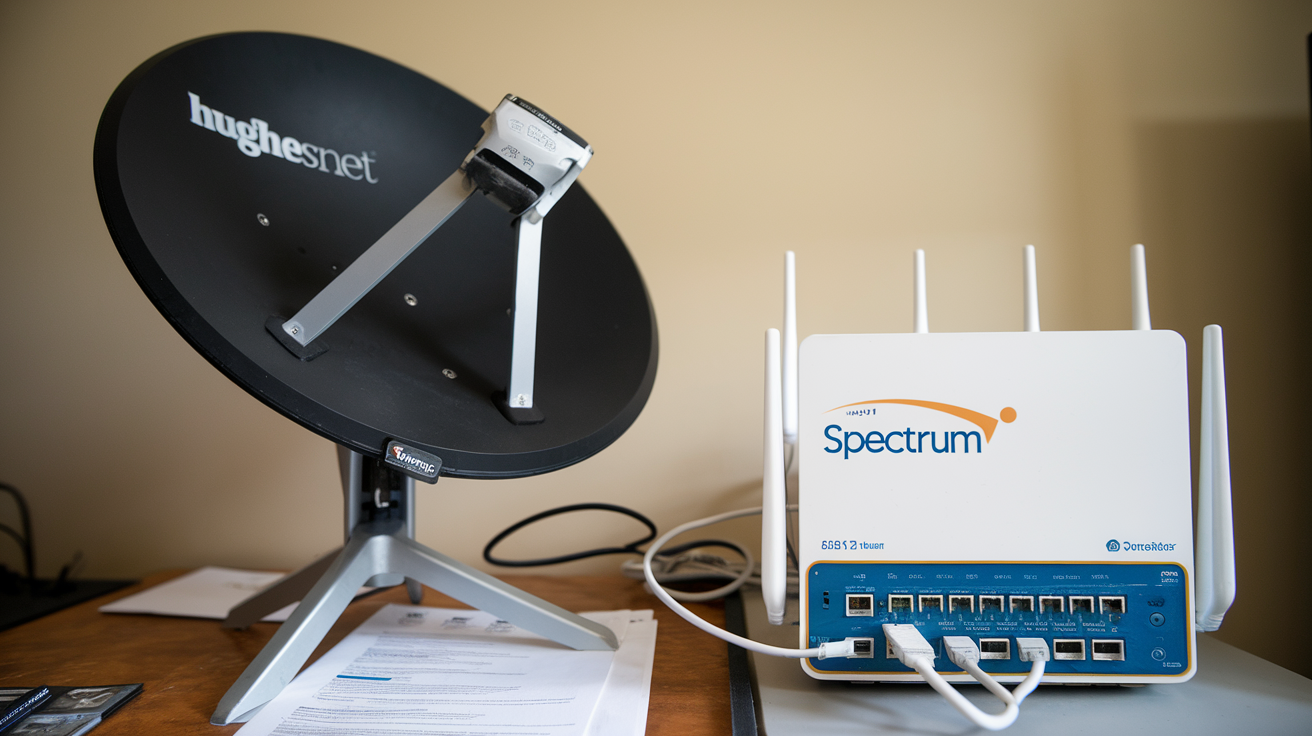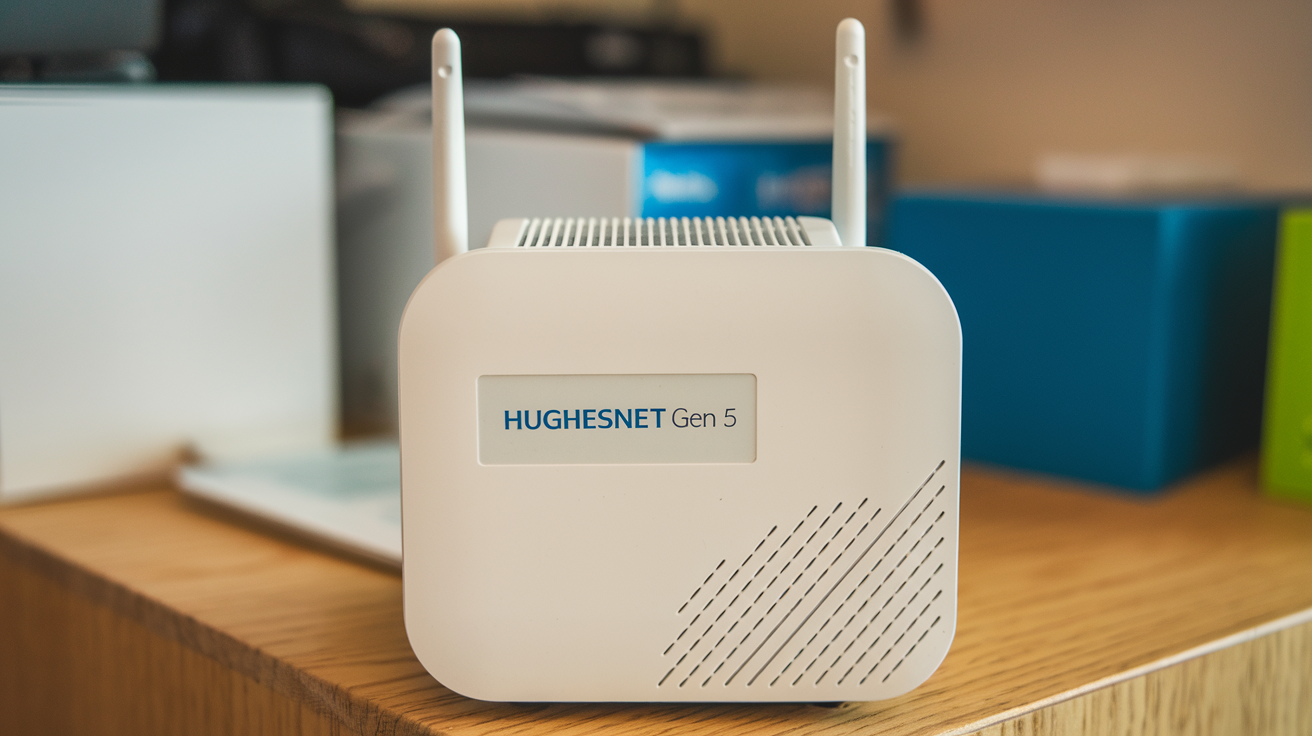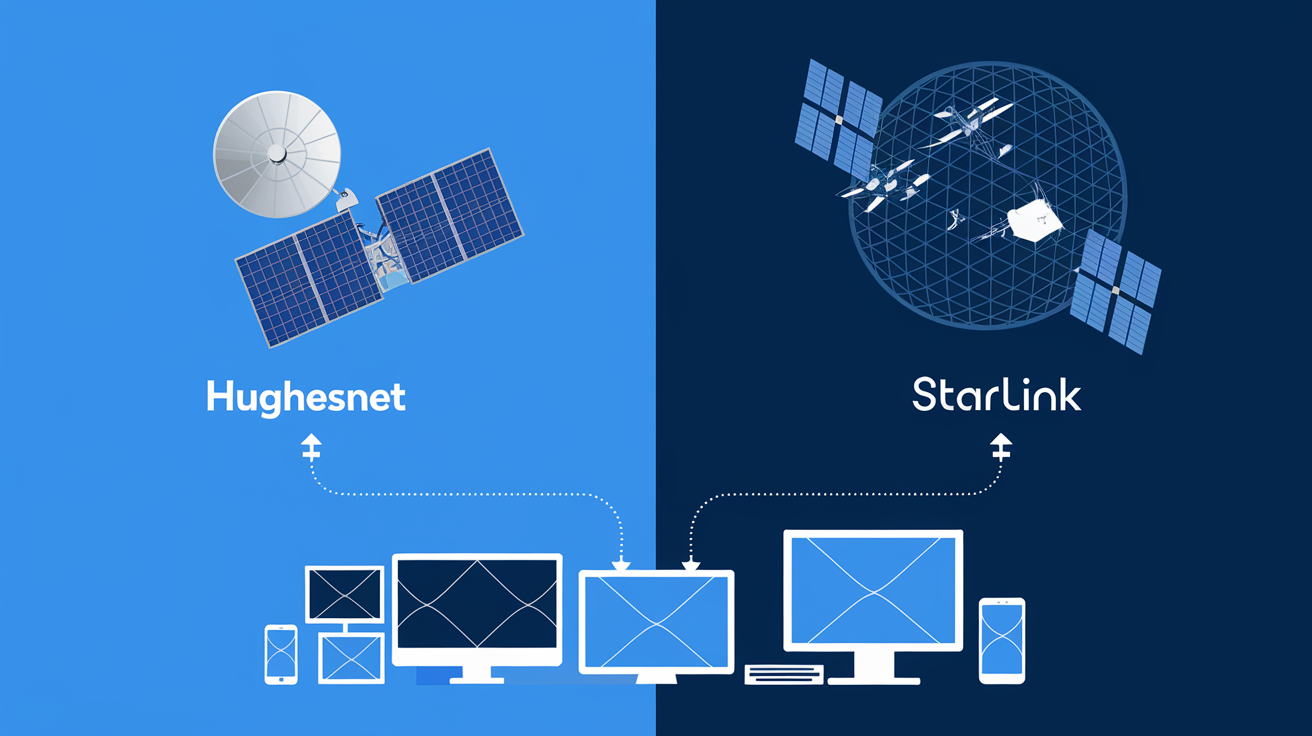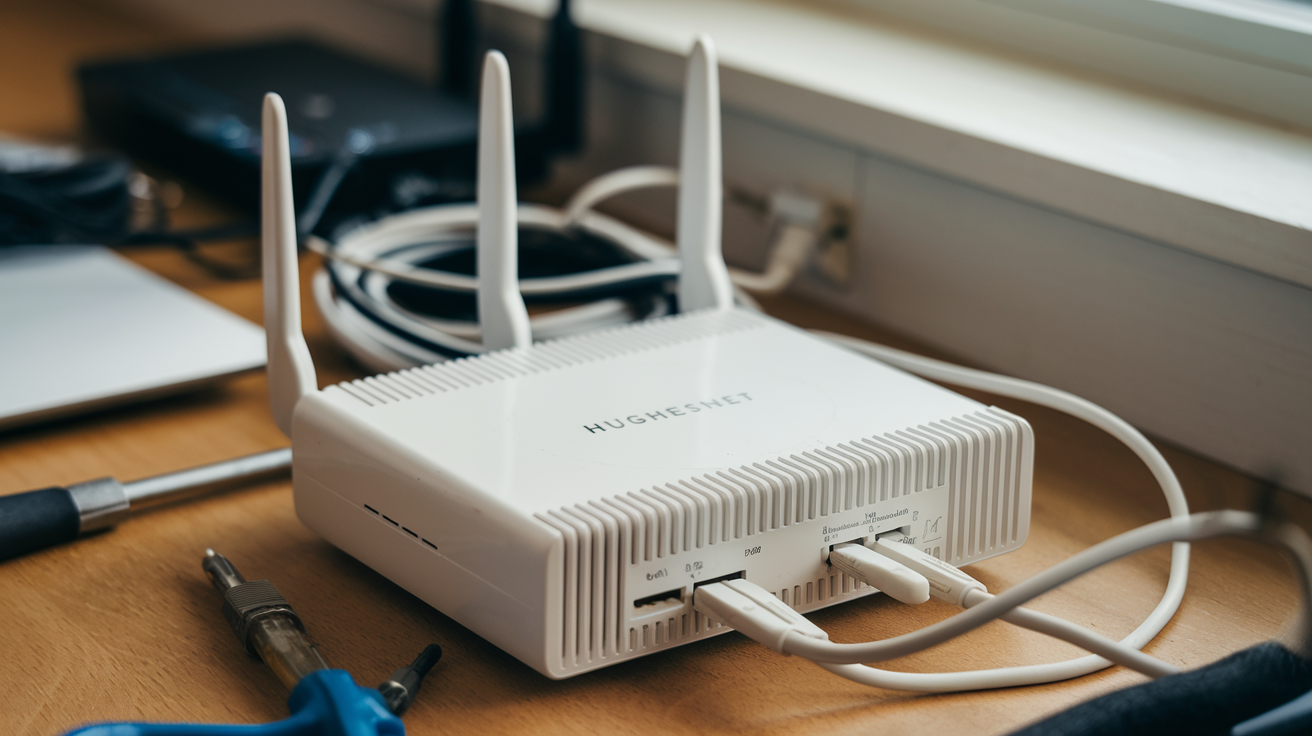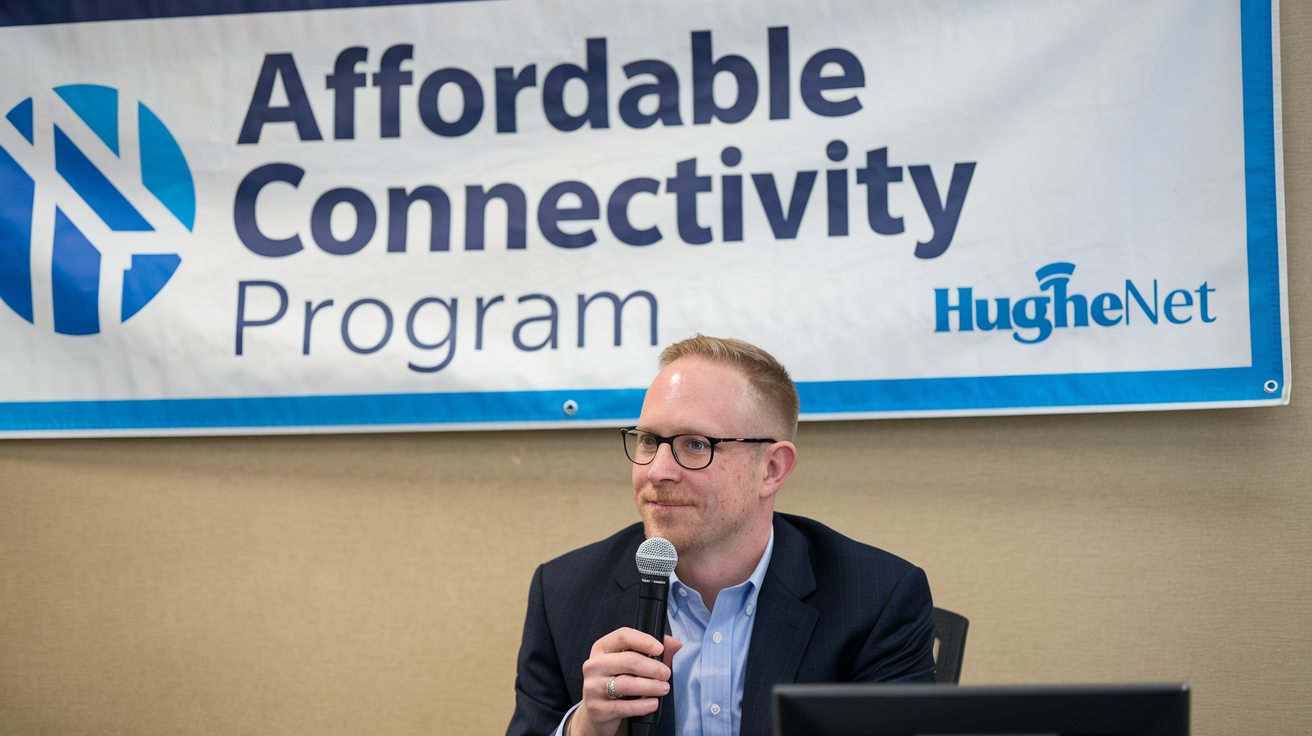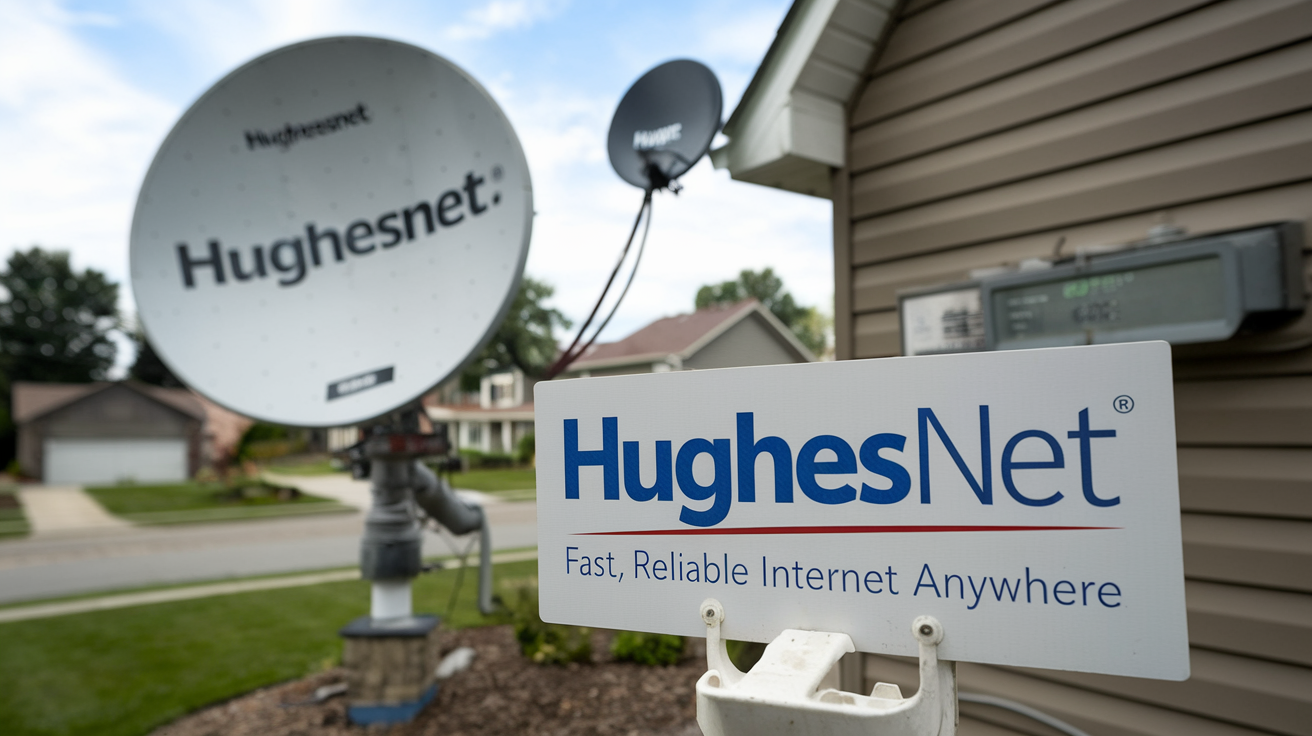-
Posted on: 08 Aug 2024

-
HughesNet is one of the biggest and most widely used satellite internet services providers in the United States that has been providing high-speed satellite internet access to areas lacking cable or fiber internet. However, even though HughesNet is easily accessible, it has certain shortcomings such as data capabilities, latency, weather interferences, and high costs for service that have made many consumers look for other service providers. Fortunately, new opportunities for fast, uncapped, rural internet may be on the horizon due to fixed wireless, the new 5G technology, and low earth orbit satellites.
This article is about the Disadvantages of Conventional Satellite Internet.
Services like HughesNet utilize satellites in what is commonly referred to as geostationary orbit 35,000 kilometers above the Earth's surface. This immense distance results in high latency since the signal is sent to space and then retrieved back here on Earth. Latency on the other hand means the time taken to send data and get a response hence it can cause delay and lag which is very risky for real-time applications such as video conferencing and online games.
Further, harsh weather conditions such as heavy rain or snow interfere with the satellite connection, as the signals have to travel through the atmosphere. While they can last just minutes, outages are known to occur more often during thunderstorms.
High costs associated with the initial setting up of satellite infrastructure as well as the subsequent maintenance and upkeep of these structures also translate to high prices that are passed on to the consumers. HughesNet offers internet plans from $60 that offer up to 25 Mbps for downloading, but the cost may increase after adding the equipment, taxes, and other charges. Also, the hughesnet internet plans offer limited data usage that ranges between 20-50 GB and once the data is used, internet speeds drop to a mere 1-3 Mbps until the next month. This makes satellite internet very useful for basic and simple internet usage but not for activities that require a lot of data such as streaming or running a business online.
New Opportunities and Challenges to Fixed Wireless Internet
Thankfully, enhancements in fixed wireless technology are making broadband internet available for rural areas all across the country. It should be noted that fixed wireless systems transmit signals directly to homes or businesses via radio towers, as opposed to satellites.
Fixed wireless signals are not transmitted to space and back like immense distances of satellites hence they are not exposed to massive exposures. This minimizes latency for real-time operation or use of the network. Slender distance also means that weather is not as interrupting as it is in longer distances, such as crossing oceans. Static wireless requires direct visibility between towers and receivers, but things like rain fade that would interrupt connections in other systems just slow down the bandwidth.
The majority of fixed wireless service providers such as Rise Broadband and Vistabeam currently provide 30-50 Mbps download speeds with no data caps for $50-70 per thirty days. Although lower than with cable or fiber, the throughput is sufficient to support multiple simultaneous HD video streams and fast web surfing.
Due to the low latency, no restrictions on data usage, and rather affordable prices for internet connection, fixed wireless is becoming one of the best options for rural consumers who are not satisfied with satellite internet.
The role of 5G technology in improving and revolutionizing rural broadband experience
The new generation of mobile communication referred to as 5G is offering speeds that are near to that of fiber-over-the-air. 5G uses millimeter-wave radio frequencies which are many folds higher than 4G LTE offering a data transfer rate that is 100 times more than the current average used by 4G. But these frequencies have a much shorter range are more confined and have more problems penetrating walls and even trees.
To do so, cellular providers are building numerous miniature 5G cell sites as opposed to giant, monolithic towers. For the rural consumers, however, the coverage is only possible within the densely populated small towns and along the highway commercial areas. Analysts believe that it will take up to a decade or longer to achieve the economic rollout of 5G for additional rural America if it will at all. Nevertheless, when it comes to attaching to a 5G device or a mounted antenna, it appears that it could shortly become a perfect choice for those people living in rural zones with coverage.
A new space race has been inaugurated by the LEO satellites.
SpaceX, OneWeb, and Amazon are contending with a group of companies in the struggle to launch constellations of low Earth orbit (LEO) satellites for global broadband internet. The name says it all; LEO satellites are positioned between 300 to 1200 miles above the surface of the Earth unlike geosynchronous satellites, which are located at about 22,000 miles above the Earth. Since the signals travel much shorter distances, LEO satellite latency could be less than milliseconds, even on par with wired internet connections.
Furthermore, when satellites are closer to each other and situated in a lower orbit, increased numbers of spacecraft are required. This enables the network to receive information from the other satellites within the network and avoid the impacts of an individual satellite failure or obstruction. OneWeb, which launched 650 satellites, should provide download speeds of 375 Mbps worldwide when the constellation is fully activated by 2027.
Elon Musk’s SpaceX Starlink is the notable threat with over 2000 satellites in the pipeline. It has also started its pilot services, and users during beta testing have achieved a range of download speeds of 50-200 Mbps and latency of under 30ms. If the network can scale while maintaining the level of performance that Starlink seems to be achieving, it could leave virtually any rural broadband offering in its dust in terms of speed and reliability. However, there are questions on whether the firm can continue to keep its prices low given that some aspects such as antenna, data, and satellite maintenance might be costly in the long run.
What’s Best for You – Organic or Conventional?
Rural residents looking for satellite internet alternatives, have to do so based on their specific needs including cost, data limits, downloading speed, reliability, and when it is available. Fixed wireless, which provides significantly extensive capped data services today, is, however, progressing at a slow pace. 5G provides phenomenal speed in areas where it has been implemented, but it is at least a few years away from mainstream adoption across rural regions. LEO satellite technology gives high performance in the global environment but demands an immense amount of capital at the start before the profitability of LEO satellite technology and other limitations are unveiled.
The web has grown in popularity, and though many can still only imagine ‘country life,’ today they don’t need to imagine not having access to the Internet. Whether fixed-wireless broadband, 5G, LEO satellite, or future service, broadband competition will ensure that the goal of connectivity for all Americans will be realized, including those in the most rural areas.
